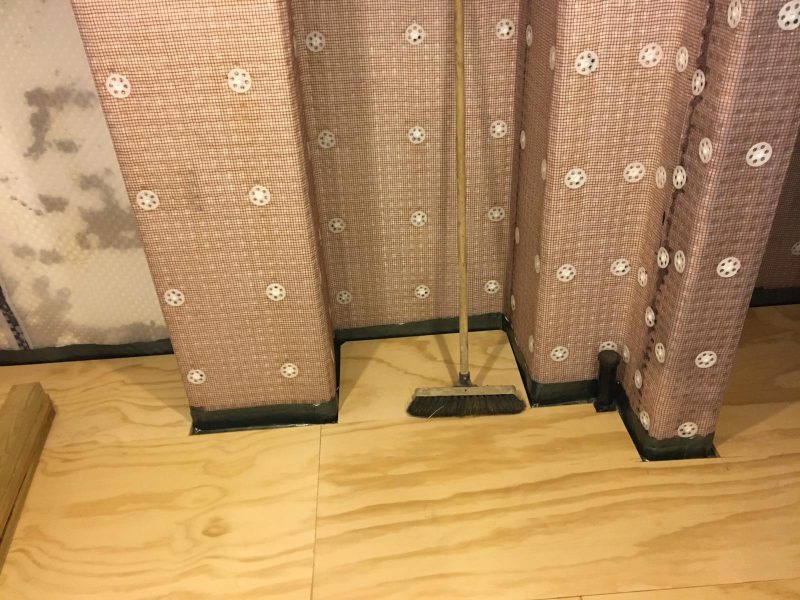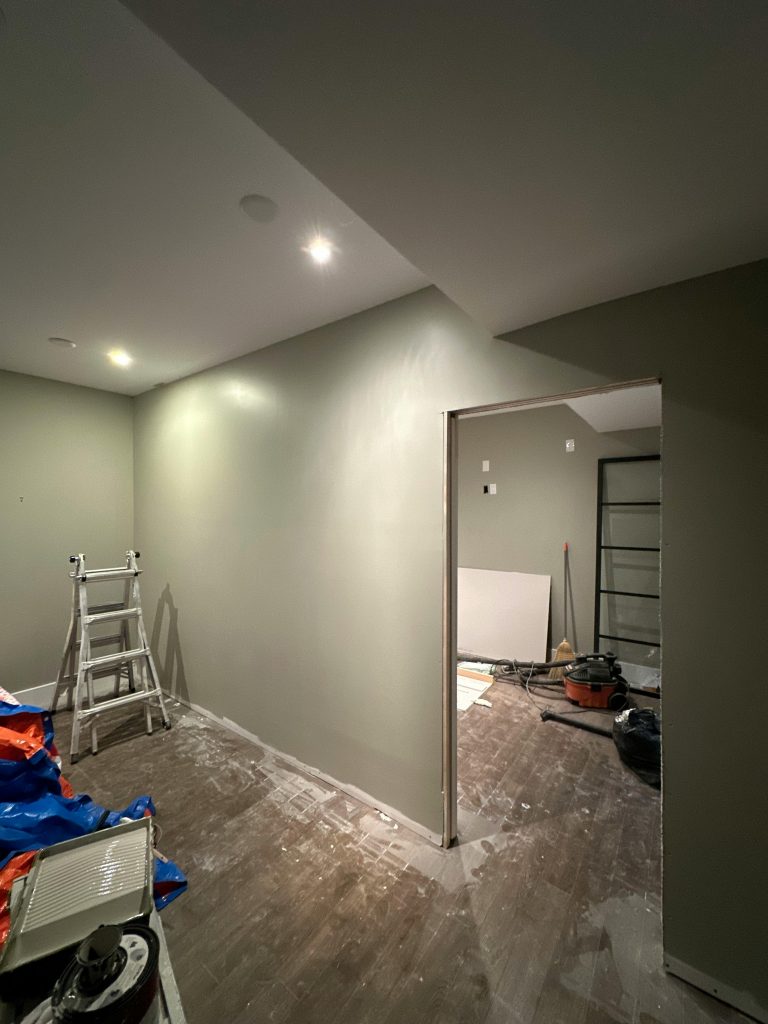
How to Tank a Cellar: A Comprehensive Guide To Cellar Tanking
Ever wondered why your cellar feels damp and uninviting? Tanking a cellar can transform that musty, moisture-laden space into a dry, usable area. As homeowners, we know the value of every square metre, and a properly tanked cellar can add both functionality and value to our property.
In this article, we’ll explore the ins and outs of cellar tanking, from understanding the basics to choosing the right materials and techniques. We’ve got you covered if you’re looking to create extra storage, a cosy living space, or simply protect your home from water damage. Let’s dive into the essentials of tanking a cellar and unlock the potential hidden beneath our feet.

What is Tanking a Cellar?
Tanking a cellar prevents water ingress, transforming damp spaces into dry, usable areas. This involves applying waterproof coatings to cellar walls and floors.
Definition of Tanking
Tanking refers to the application of a waterproof membrane or coating to cellar walls and floors to stop water entering. This process, often referred to as cementitious tanking, essentially creates a barrier to prevent water ingress. Apply tanking directly to surfaces, ensuring a dry environment.
Importance of Waterproofing a Cellar
Tanking a cellar turns a damp, unusable space into a functional area. Waterproofing enhances property value, provides additional storage or living space, and protects against structural damage. Proper tanking helps avoid mould, damp walls, and other water-related issues, making it essential for ensuring long-term cellar usability.
Common Issues When a Cellar is Not Tanked
Without tanking, cellars often suffer from damp problems, water ingress, and structural damage. Damp walls can lead to mould growth and unhealthy living conditions. Untanked cellars also risk flooding, damaging stored items, and weakening the building’s foundation. Addressing these issues requires investing in a reliable waterproofing system like tanking.
For more information on effective cellar waterproofing solutions, visit the Property Care Association.

Steps to Tanking a Cellar
The process of tanking a cellar involves several crucial steps. Effectively waterproof the space to prevent damp and water ingress by following these steps.
1. Assessing the Cellar Space
Before tanking a cellar, we need a thorough assessment. Inspecting for existing damp problems and structural issues is key. Checking the cellar walls and floor for cracks, moisture, and signs of water ingress helps us plan the appropriate waterproofing system.
2. Preparing to tank cellar walls
Preparation ensures successful cellar tanking. First, we clear the cellar of any debris or old coatings. Cleaning the surfaces thoroughly and repairing any structural damage, like cracks in the walls, is essential. Install a drainage system, such as a cavity drain system, to stop water entering the cellar.
3. Choosing the Right Tanking Materials
Selecting the correct tanking materials is crucial for waterproofing. We choose tanking slurries, tanking membranes, and cavity drain membranes based on the cellar’s specific needs. Use cementitious tanking materials for their durability. Evaluating the cellar’s condition helps us decide the best combination of materials.
4. Applying the Tanking Materials
Applying the chosen tanking materials methodically creates a waterproof barrier. Our process usually starts with a slurry applied directly to the walls and floor. We often need two coats, with the second coat applied after the first slurry cures. When using a membrane, we fit and seal it correctly to stop water ingress. For detailed installation guides, the Property Care Association offers comprehensive resources.

Benefits of Tanking a Cellar
Tanking a cellar offers numerous benefits, enhancing the functionality and value of a property by transforming a damp space into a dry, usable area. Let’s explore these benefits in detail.
Preventing Water Damage
Tanking prevents water ingress by creating a waterproof barrier on cellar walls and floors. Without this protection, cellars often encounter damp problems, leading to mould growth and structural damage. Cementitious tanking, through its durable slurry, ensures long-lasting protection. Effective tanking helps stop water from entering, safeguarding the cellar’s structural integrity and preventing costly repairs.
Increasing Property Value
Proper cellar tanking can significantly boost property value. Buyers often view a waterproofed cellar as added usable space, increasing property appeal. Estate agents confirm that properties with tanked cellars attract higher offers due to the enhanced utility. Investing in basement waterproofing systems, including tanking slurries and membrane applications, offers a substantial return when selling the property.
Creating Usable Living Space
By tanking the cellar, we create a dry environment suitable for conversion into extra living space. Whether turning the cellar into a home office, gym, or entertainment room, tanking makes these transformations possible. A dry, waterproofed cellar also provides excellent additional storage without the risk of damp damage. Effective tanking transforms under-utilised spaces into functional, valuable areas, meeting modern living needs.
Further details about effective waterproofing solutions can be found on the Property Care Association’s website. For guidance in selecting the right tanking system, the Basement Information Centre offers comprehensive resources.
Cost of Tanking a Cellar
When considering a cellar or basement tanking project, one of the key factors to take into account is the cost. Tanking your basement or cellar involves applying a damp proof membrane or tanking coating to the cellar walls and floor to convert the damp space into a dry one.
The best way to tank a cellar is by using a cavity drainage system or tanking slurry. The tanking process involves mixing the tanking slurry, applying it to the cellar walls and floor, and letting it cure. Tanking slurry blocks water from entering the space in your home, ensuring a waterproof and damp-free environment.
Tanking costs will depend on the size of the cellar, the materials used, and whether you choose to tank the floors as well. If you’re considering a cellar tanking project, it’s best to contact cellar tanking experts for a tanking guide and estimate.

DIY vs Professional Tanking and Waterproofing
When it comes to tanking a cellar we’re faced with the choice of doing it ourselves or hiring professionals. DIY tanking can be cost-effective and satisfying but it requires a good understanding of the materials and techniques. On the other hand professional tanking ensures high-quality results and peace of mind knowing that the job’s done right.
Ultimately the decision depends on our budget and confidence in handling the task. Whether we choose to take on the project ourselves or enlist expert help, tanking a cellar is a worthwhile investment that can significantly enhance our property’s value and functionality.
Tanking a Cellar FAQs
Cellar tanking involves applying a waterproof coating to the walls and floors of a cellar to prevent water ingress and dampness, thereby making the space dry and usable.
Tanking your cellar prevents water damage, increases property value, and creates additional usable living space. It protects against damp problems, mould growth, and structural damage.
Durable cementitious tanking materials, tanking slurries, and membranes are commonly used to create a waterproof barrier in cellars.
Yes, tanking can significantly raise your property’s appeal and market value by transforming unusable damp areas into functional, dry spaces.
Tanking safeguards your cellar from water ingress, damp problems, mould growth, and potential structural damage, thus enhancing its overall integrity.
A tanked cellar can be converted into additional living spaces, such as a bedroom or office, or used as storage areas, meeting modern living needs.
Detailed guidance on effective tanking procedures can be found through resources provided by the Property Care Association and the Basement Information Centre.
The steps include surface preparation, applying tanking slurry or membrane, curing, and maintaining the system to prevent future damp issues.
While some may choose a DIY approach, professional help ensures the process is done correctly and efficiently, minimising risks of future damp issues.
We’re Ready To Help You
Please get in touch with our friendly team today and we can get the ball rolling on your project sooner than you think.
